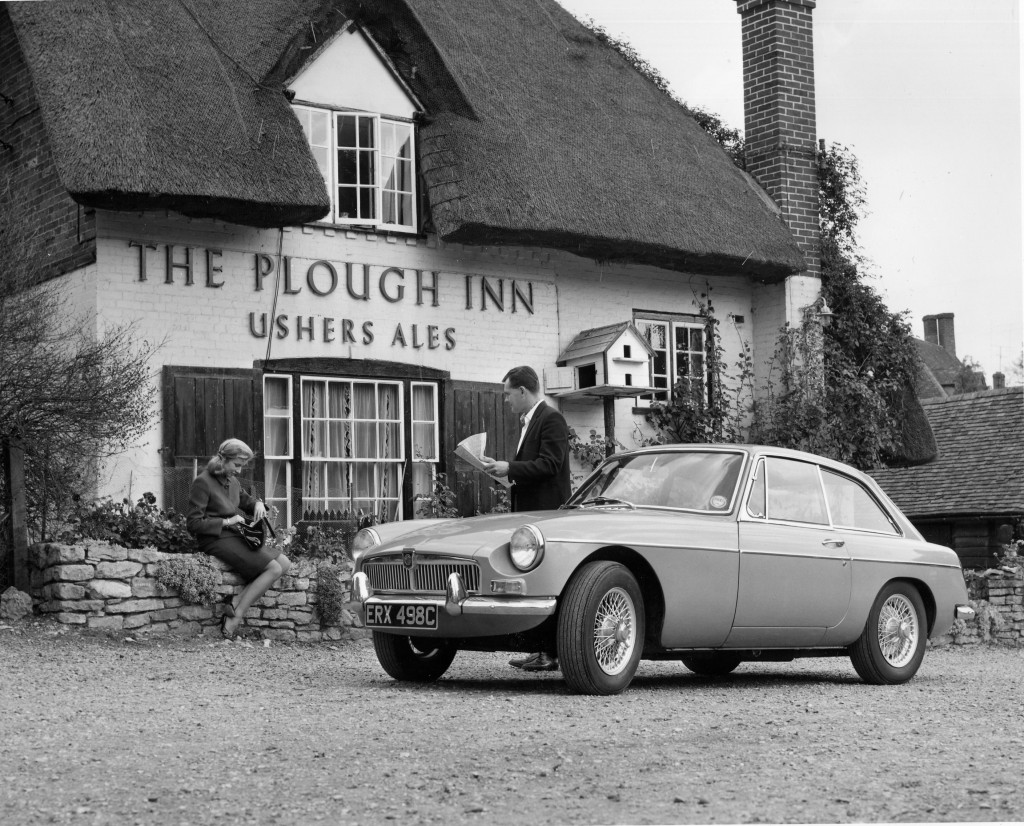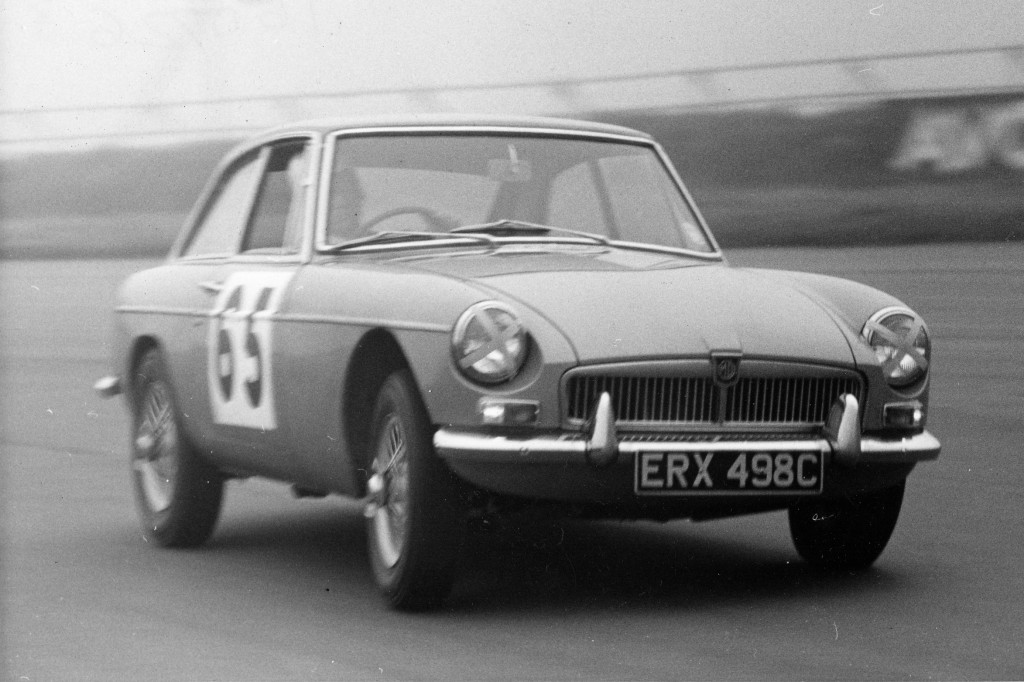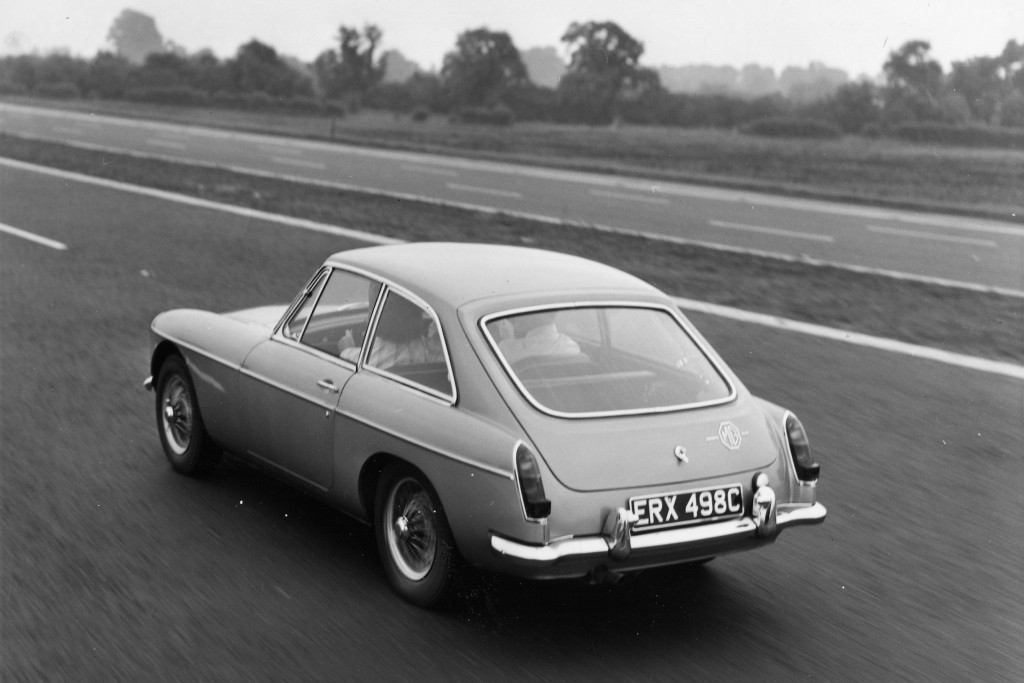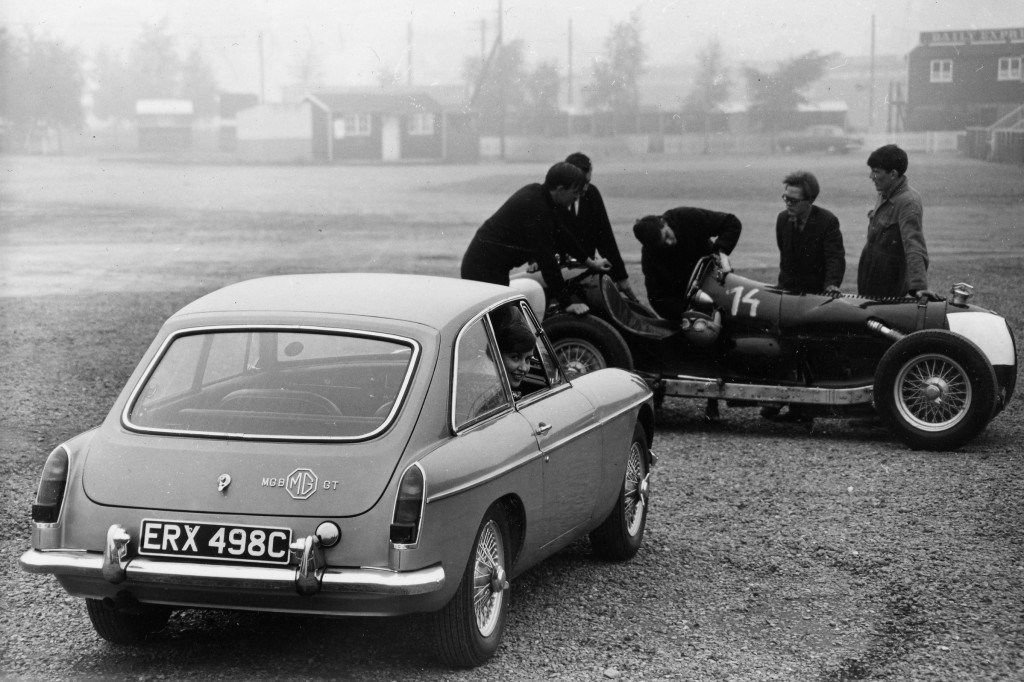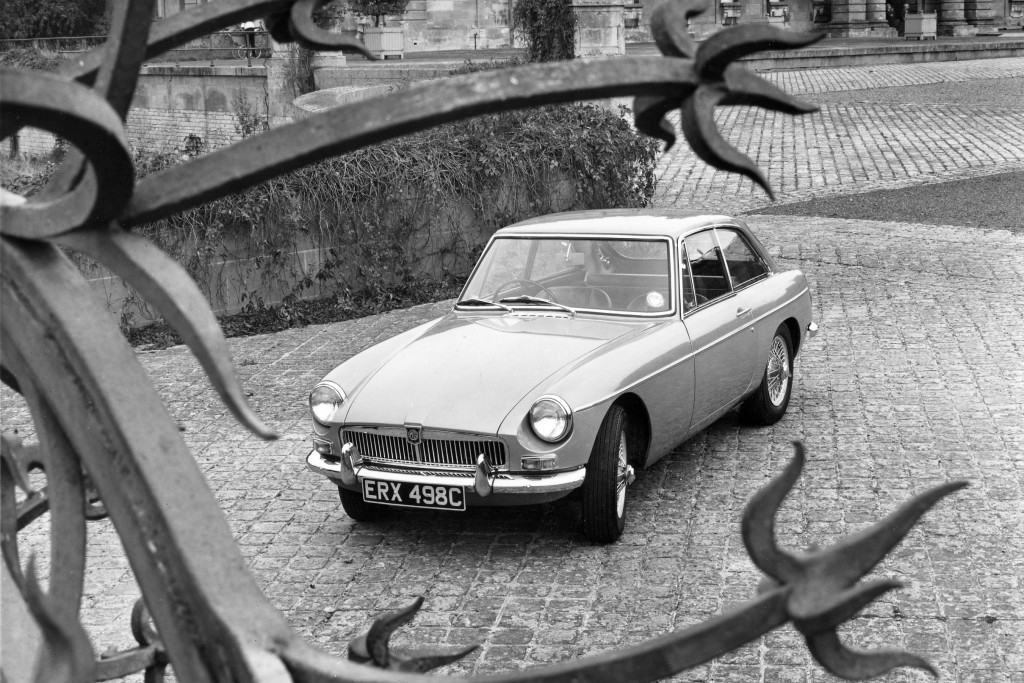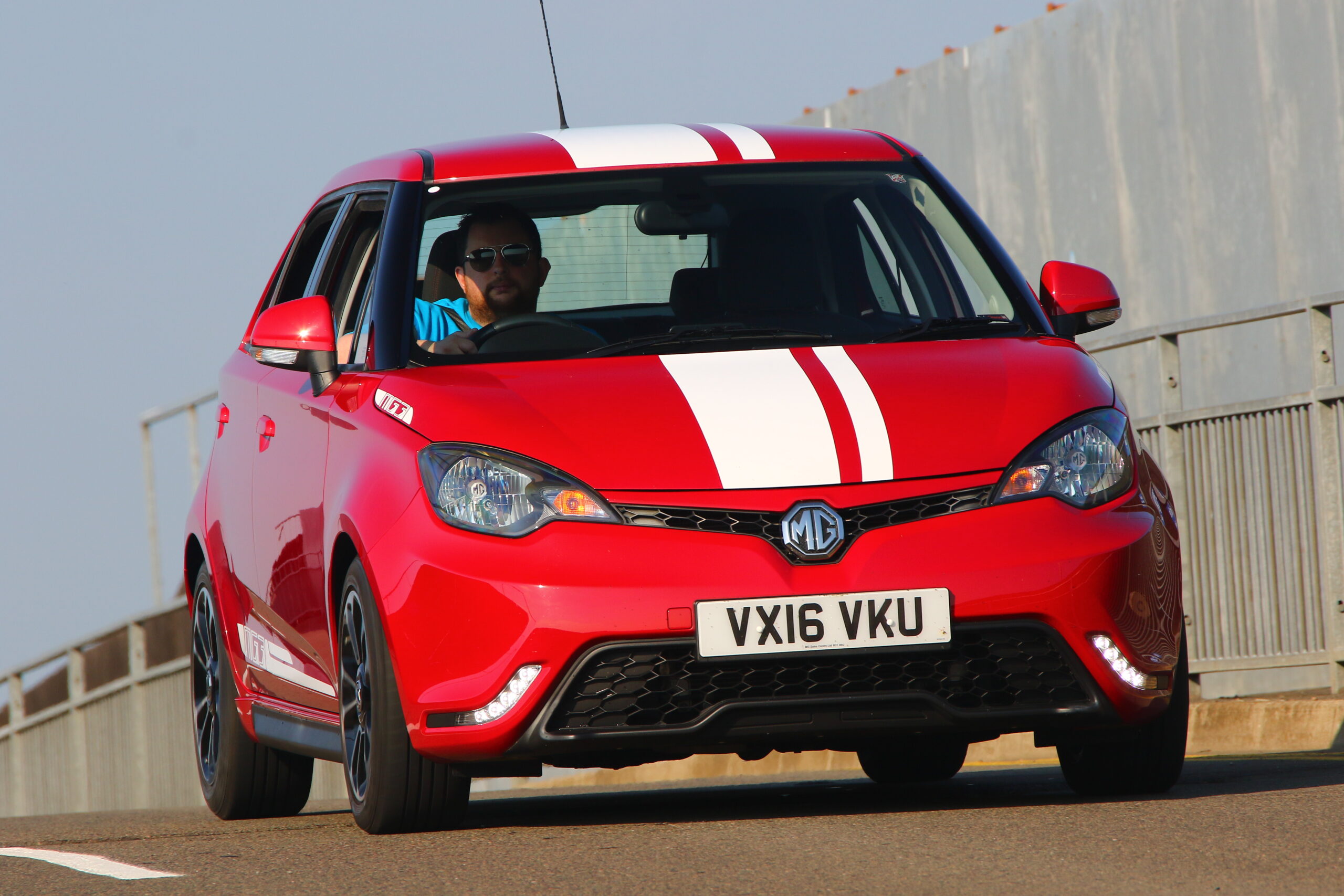It’s the ‘MGB’ GT
Reproduction in whole or in part of any article published on this website is prohibited without written permission of The MG Car Club.
This month marks the 50th Anniversary of the MGB GT. Launched at the London Motor Show on October 20 1965, the MGB GT was to become an instant success. Safety Fast! carried a review of the car in the November 1965 issue, which is reprinted here, followed by the respected motoring journalist Bill Boddy’s thoughts on the car when he managed to road test one a while later.
A sleek new fastback version of Abingdon’s most popular sports car
Here she is at last – the long awaited GT version of the ‘MGB’! For a long time now sports car enthusiasts, both at home and overseas, have been asking for a closed coupe version of the ‘MGB’ that offers real saloon car amenities, has lots of luggage space, and can accommodate at least one rear seat passenger or a couple of children in reasonable comfort. The ‘MGB’ GT, announced at the London Motor Show last month, does just this.
The GT is not just a hard top version of the two-seater ‘MGB’; it is an entirely new body style – albeit based on the very successful and now established lines of the ‘MGB’. And, by the way, the GT is an additional model to the MG range; the best-selling two-seater ‘MGB’ remains in full production for those who prefer fresh air with their motoring.
The new fastback body, as well as being extremely attractive, really does provide spacious and luxurious comfort for driver and passenger while the luggage carrying capabilities must be the best of any sports MG ever built.
With the windscreen 4 in. deeper (and wind-up windows 1 1/2 in. deeper) than the two-seater ‘MGB’, forward visibility is exceptionally good. Rear vision is splendid via the large rear window and the two rear quarter windows. These are hinged at the forward edges and, along with the efficient ‘MGB’ heater and fresh-air unit, cockpit heating and ventilation can cope with all climates. Instrumentation and front seating are identical to the two-seater ‘MGB’, the interior being upholstered in leather with washable plastic-covered door trim panels. The roof lining is also washable; twin sun visors are provided.
At the rear is a folding bench seat and the large flat luggage platform accessible through the lift-up rear trunk lid which incorporates the rear window. The lid, by the way, has concealed hinges and spring-loaded supports which make opening a one-handed job and obviate the need for a stay to hold it open.
The rear seat can be used to accommodate two children or one adult in reasonable comfort. With the passenger’s seat moved well forward there is adequate foot and head room for all but tallest rear seat passenger. The luggage platform is completely flat, the spare wheel being mounted in a separate compartment beneath (accessible through a panel in the floor). With the spare wheel there is ample room for tools, jack, and foot pump.
Additional luggage-carrying space can be provided by folding the cushion of the rear seat forward and the squab downwards. To provide even more luggage space the rear seat cushion can be removed entirely to leave the space between the rear of the front seats and the folded rear seat squab available as stowage space.
Mechanically, the GT shares the same specifications as the two-seater ‘MGB’, the power unit being the 1798-c.c. five-bearing engine developing 95 b.h.p. Suspension details remain unchanged except that a front anti-roll bar is fitted as standard equipment and there are stronger front and rear springs designed to cope with the heavier loads which the GT may be called upon to carry. The customary ‘MGB’ optional extras, heater, overdrive, radial-ply tyres and wire wheels, apply to the GT also.
The GT is a little heavier than the two-seater ‘MGB’ but improved aerodynamics mean that the performance of the two models is almost identical. However, extensive sound deadening material (and again the improved aerodynamics) make the GT the quietest sports MG ever built.
The U.K. price of the ‘MGB’ GT, with disc wheels and with oil cooler, anti-roll bar and headlamp flasher switch as standard equipment, is £825, or £998 8s. 9d. including Purchase Tax.
Bill Boddy’s MGB GT Road Test
What of this newest MGB on the road? It is a sporting car in the old tradition, by which I mean that it is not scientific like a Porsche or Lotus Elan. Many customers, Americans particularly, enjoy it that way and wouldn’t have the MG otherwise. It is a car which does most things well, nothing outstandingly. Engine torque is such that you have to use the gearbox to really go motoring. Even then, acceleration, at 0-60 m.p.h. in 13.1 sec., a s.s. 1/4-mile in 19.6 sec., is not outstanding for a 1.7-litre so-called GT “2 + 1.” The legal top pace of 70 comes up in 18 sec. and leaves the engine well out of the red in top gear; indeed, 79 m.p.h. is obtainable in 3rd gear.
The steering itself, fairly heavy, positive, transmitting shake, accurate and sensibly geared at 2.9 turns, lock-to-lock, is well suited to the sporting demeanour of the MGB, the wheel fairly thick-rimmed, with three sprung wire spokes, set a trifle high for the low seating.
The handling is good, with no appreciable roll, mild understeer, and easily-corrected final oversteer, the anti-roll stiffening bar and the Dunlop SP4s tyres obviously suiting the suspension characteristics.
The GT aspect is not overdone, the back window but not the roof being at an acute angle, while there is lavish padding behind the rear-seat occupant’s head. Even so, head room is fairly limited and the well-upholstered seat, if used, is more suitable for a small labrador than a human. However, its too vertical back-rest folds down easily and then the body reveals its true GT aspect, for the rear compartment becomes an upholstered shelf for luggage, prevented from sliding forward, and easily loaded through the lift-up back window, which stays up unaided, held by clock-springs incorporated in the struts. Spare wheel and tool kit live under the floor.
The engine likes 100-plus octane fuels, and, as has been hinted at, has to be turning over at 3,000 r.p.m. to give maximum torque. Its tachometer has an orange band between 5,500 and 6,000 r.p.m., the red band from there to 7,000 r.p.m. Oil pressure is normally 60 lb./sq. in., the coolant heat 180 deg. F., some richening of the twin HS4 S.U. carburetters was needed for cold starts, and in very varied running conditions the consumption of Esso Golden came out at 26.3 m.p.g. I used the MG for 600 miles and, having been brought up on vintage-type cars, greatly enjoyed it and I can understand why many discerning drivers are ordering the new GT.
This is, in short, a car which those who like it will like very much indeed. It feels durable, captures the spirit of pre-war motoring, and is a good proposition in this context at the price, only the absurd 70-m.p.h. speed limit making me wonder whether the MG 1100 saloon isn’t, for the time being; just as pleasing to drive on British roads.
[efstabs class=”yourcustomclass”]
[efstab title=”MGB GT Facts” active=”active”]
1. Launched in October 1965 and announced at the London Motor Show
2. Fitted with a larger fuel tank (12 gals) over the MGB (10 gals)
3. Fitted with heaver ‘Police’ rear springs, as used on the Police MGBs
4. Anti-roll bar fitted as standard, optional on MGB
5. Paddy Hopkirk, Rauno Aaltonen and Timo Mackinen all owned MGB GTs
6. The MGB GT was styled in part by Pininfarina
7. Windscreen was 4in deeper and the wind-up windows were 1 1/2in deeper than the MGB
8. Had the Salisbury type rear axle which was later fitted to the ‘B’
9. Was sometimes called ‘the poor man’s Aston Martin’
10. 125,282 MGB GTs were produced over its production period
[/efstab]
[/efstabs]

 MG Car Club
MG Car Club